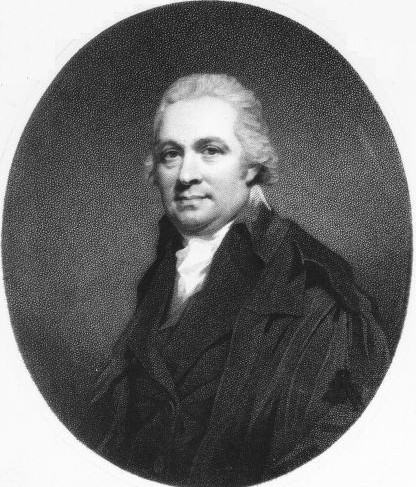<Back to Index>
- Chemist Daniel Rutherford, 1749
- Composer Vincenzo Salvatore Carmelo Francesco Bellini, 1801
- Sultan of the Ottoman Empire Mehmed V Reshad, 1844
PAGE SPONSOR

Daniel Rutherford FRSE FRCPE FLS FSA(Scot) (1749 –1819) was a Scottish physician, chemist and botanist who is most famous for the isolation of nitrogen in 1772.
Rutherford was the uncle of the novelist Sir Walter Scott.
The son of Professor John Rutherford (1695 - 1779) and Anne Mackay, Daniel Rutherford was born in Edinburgh on 3 November, 1749. He was educated at Mundell's School and Edinburgh University (MD 1772). When Joseph Black was studying the properties of carbon dioxide,
he found that a candle would not burn in it. He
turned this problem over to his student at the time, Daniel Rutherford.
Rutherford kept a mouse in a space with a confined quality of air until
it died. Then, he burned a candle in the remaining air until it went
out. Afterwards, he burned phosphorus in that, until it would not burn. Then the air was passed through a carbon dioxide absorbing solution. The remaining air did not support combustion, and a mouse could not live in it. Rutherford called the gas (which we now know would have consisted primarily of nitrogen) “noxious air” or “phlogisticated air”. Rutherford reported the experiment in 1772. He and Black were convinced of the validity of the phlogiston theory, so they explained their results in terms of it. He was a professor of botany at the University of Edinburgh and keeper of the Royal Botanic Garden Edinburgh.